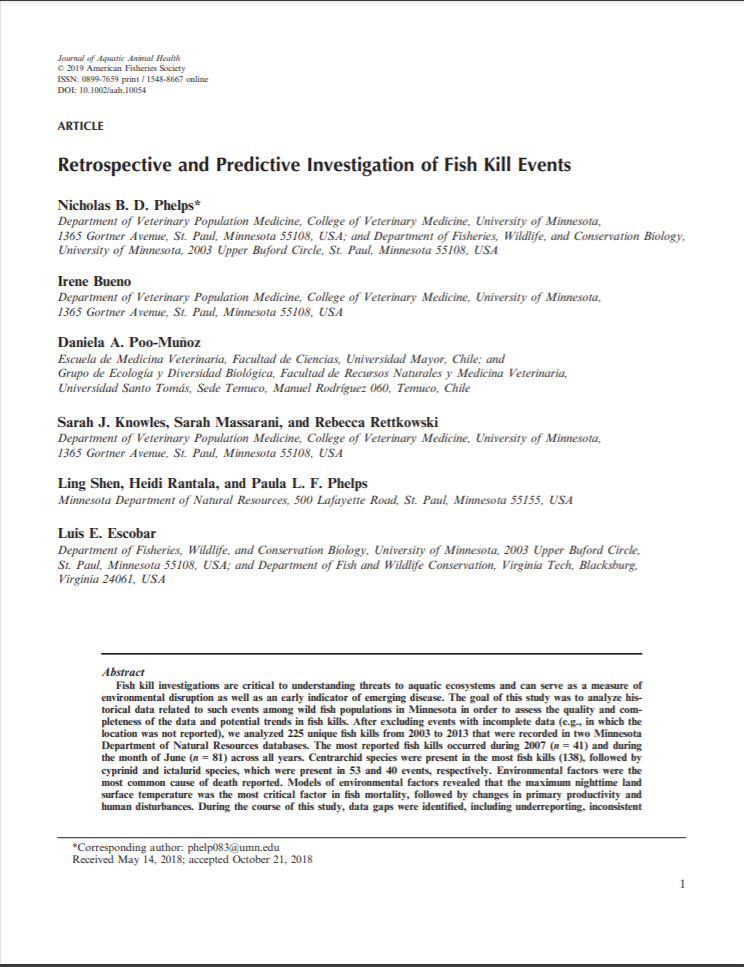Retrospective and Predictive Investigation of Fish Kill Events

Fecha
2019Autor
Poo-Muñoz, Daniela A. [Univ Mayor, Fac Ciencias, Escuela Med Vet, Santiago, Chile]
Phelps, Nicholas B. D.
Bueno, Irene
Knowles, Sarah J.
Massarani, Sarah
Rettkowski, Rebecca
Shen, Ling
Rantala, Heidi
Phelps, Paula L. F.
Escobar, Luis E.
Ubicación geográfica
Notas
HERRAMIENTAS
Acceda a títulos restringidos
¿Cómo descargar?Resumen
Fish kill investigations are critical to understanding threats to aquatic ecosystems and can serve as a measure of environmental disruption as well as an early indicator of emerging disease. The goal of this study was to analyze historical data related to such events among wild fish populations in Minnesota in order to assess the quality and completeness of the data and potential trends in fish kills. After excluding events with incomplete data (e.g., in which the location was not reported), we analyzed 225 unique fish kills from 2003 to 2013 that were recorded in two Minnesota Department of Natural Resources databases. The most reported fish kills occurred during 2007 (n = 41) and during the month of June (n = 81) across all years. Centrarchid species were present in the most fish kills (138), followed by cyprinid and ictalurid species, which were present in 53 and 40 events, respectively. Environmental factors were the most common cause of death reported. Models of environmental factors revealed that the maximum nighttime land surface temperature was the most critical factor in fish mortality, followed by changes in primary productivity and human disturbances. During the course of this study, data gaps were identified, including underreporting, inconsistent investigation, and the lack of definitive diagnoses, making interpretation of our results challenging. Even so, understanding these historical trends and data gaps can be useful in generating hypotheses and advancing data collection systems for investigating future fish kills. Our study is a primer investigation of fish kills providing information on the plausible areas, seasons, and fish groups at risk that can guide active environmental monitoring and epidemiological surveillance of fishes.
Coleccion/es a la/s que pertenece:
Si usted es autor(a) de este documento y NO desea que su publicación tenga acceso público en este repositorio, por favor complete el formulario aquí.